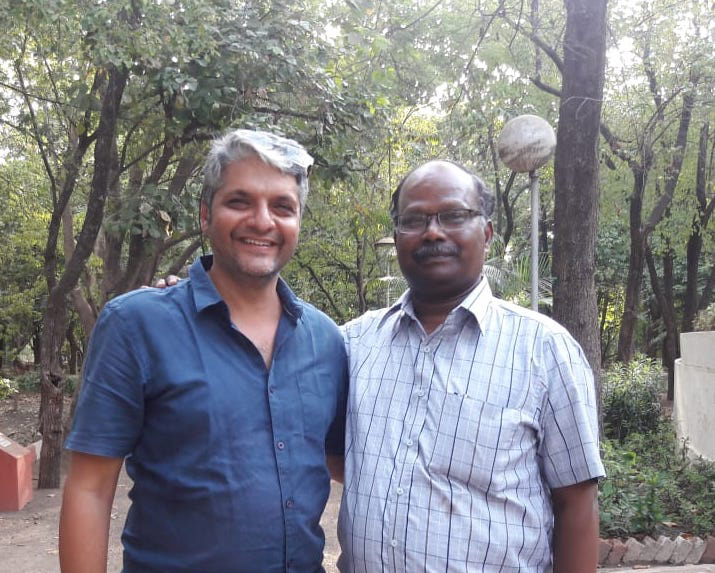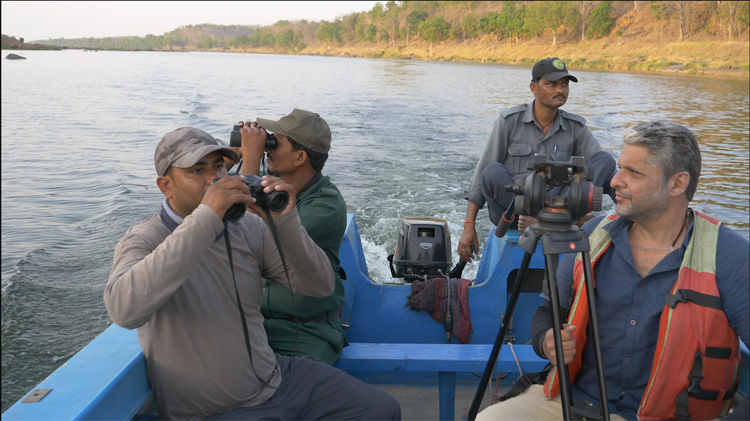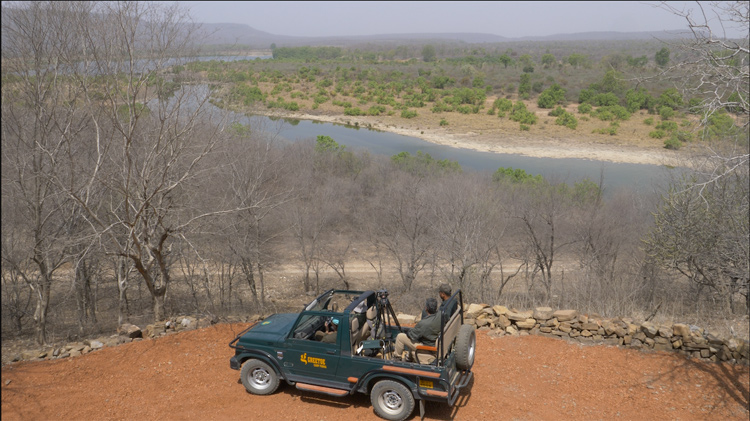I am a chartered accountant and a wildlife filmmaker based in India. I have been involved in conservation work for more than a decade and in 2007 decided to make films so that pertinent human-earth stories could reach audiences.
Well, how did our new series ‘Emerald Forests – Return of the Tigers’ happen! (The 40-minute-long, 2-part documentary series releases on EPIC Channel on 21 March 2020 at 12 pm and 8 pm). We were working on one of our tiger film projects in central India, and one winter, I decided to travel further north and spend time in an exotic jungle called Panna Tiger Reserve that is tucked away within an ancient forest created by prehistoric volcanic eruptions. On this sojourn, as a director-cinematographer-writer, I was enthralled by Panna's panoramic beauty! I knew that a few years back, Panna had lost almost all its tigers, more than 40 of them due to human- related causes, and since then tigers had again been reintroduced to this forest. But the scale and enormous success of the reintroduction truly came to light during conversations with folks who lived around the park, especially as everyone sang praises of a senior officer who inspired this story in the first place: R Sreenivasa Murthy. With my work in conservation for the past decade, I know the odds stacked against forests, but to see such a fantastic transformation at Panna Tiger Reserve and the motivation level of its department was really fascinating. This was a film with an iconic story that had to be made for the world to see. I wanted to find out so much more and began spending time at Panna, understanding its landscape, wildlife and how a story could shape up. A story about the return of tigers had to have genuine footage of the resident tigers at Panna Tiger Reserve.

Apart from the broadly understood tiger behaviour, each tiger had its own personality and routine, and to do real justice to its behaviour we needed to spend months in this forest. We had begun to gain initial footage and a broad script began falling into place. By this time it was felt that a film could surely be made. Greatly inspired, I wanted to meet and spend time with Murthy, who is now additional principal chief conservator of forest, biodiversity. Murthy was appointed the Field Director of Panna Tiger Reserve back in 2009 after the tigers were lost, to lead the efforts for the reintroduction of tigers. He and his team faced many challenges including ensuring the introduced tigers settled well and were safe. Eventually the efforts became a huge success as new cubs were born and Panna today has more than 50 tigers. These were the heroes responsible for the return of the tigers to Panna and our film project’s inspiring journey with Murthy began. During the progress of the project Murthy was kind enough to share with us for the first time in public domain images from those historic days, especially of the arrival of the first litter of cubs in deep gorges, and many more moments which are in our documentary series Emerald Forest.
Meanwhile, our earlier Elephant Film “Bastion of the Giants” which is an internationally acclaimed multi-awarded film, after broadcast across the World, had also begun its broadcast tie-up in India with EPIC Channel in association with AnimationXpress. Subsequently, when EPIC began DocuBay, an international documentary-streaming platform, they approached us through AnimationXpress to stream Bastion of the Giants on their Docubay platform. I was also now considering pitching our Panna film to a broadcast partner and that is when, as producer of Emerald Forest, our film company Brave Age Films associated with producers Rashmmi Menon and Sunita Menon of AsuRe Productions and EPIC Channel came on board as commissioners of the documentary series Emerald Forests – Return of the Tigers.

Panna National Park has alluring visuals at every turn, and at almost every second, these Emerald Forest reveal a wide array of wildlife species like crocodiles, leopards, critically endangered vultures, Chinkara, Chausingha and many more, with Bengal Tigers on top of Panna's jewel crown.
As we continued filming, the vision for Emerald Forest and how the shots should appear on screen were firmly imprinted in my mind as we moved along the river, plateaus, stunning gorges, steep cliffs, valleys, ravines and tall canopies. These visuals had to now be imprinted on to the camera sensors just the way the mind saw them or even from the perspective of a moving animal. In other projects we are using custom-built cranes to get this motion, but at Panna Tiger Reserve, especially at the edges of cliffs and on the river, such equipment would be unwieldy, so we used gimbals and compact electronic cranes allowing the cameras to reach beyond the edges of the cliffs and also have sweeping motions as one can see throughout the 2-part Emerald Forest series: whether it is the camera swooping across the waterhole Panna Seha or then visuals gliding across the famous gorge Dudhwa Seha. Another aspect was keeping the support crew safe, for example on top of steep gorges, even while trying not to provoke hordes of buzzing bees. To get the wide landscapes of the park and the sense of timelessness, we have used many filming techniques including hyperlapses, even when the cameras were in the air. We also used similar filming techniques in our other film on EPIC Channel- Wetlands-Miracles in Mumbai, for which we had to film from moving speed boats.

Unlike many other National Parks with wider open landscape, Panna has an undulating terrain with many well tucked-away oases that tigers can settle into. Fortunately with our years of work with the tigers, we were able to understand their movement patterns to some extent. The jungle has its own senses, in terms of the eyes and ears of prey animals like deer, langurs and more that can see big cats in dense vegetation even before we can. As wildlife trackers, we are attuned to hearing these animals’ alarm calls and look for other signs that a predator has moved in the area. In Panna Tiger Reserve too, soon enough, the tigers started revealing themselves. At times we waited for days in anticipation of the opportune moment with cameras and angles ready to capture the window of a few seconds with the tigers and their activities. The other mysterious big cat-leopards also began showing up for our lenses.
These sightings are also a testament to the good work that continues to be carried on by current field director Krishan Singh Bhadauria, who also runs villager education programmes with organisations like Last Wilderness Foundation who have done ground-breaking work with forest communities like the Pardhis.
Most of Panna Tiger Reserve's hidden charms are out of bounds, like in all tiger reserves in India. We took special permissions so that we could bring alluring scenes from these out-of-bound areas to audiences, which included rock paintings deep inside the forests and the third tableland of Panna Tiger Reserve: the Talgaon range. This part of Panna was being seen for the first time even by some of our team from Panna, and being among the highest points in the area gave us a breath-taking view, as if transported to the panoramic plains of Africa with roaming herds of herbivores like Nilgai. Being peak days of summer, temperatures soared to 48°C and we were spending full days at the Park from 5 am to 6 pm.

All these shots were brought back to post production with two month of the basic sorting and shot divisions before the main edit could even start. The script also began to take a crisper shape. As a cinematographer you know the lengths at which one goes to get the shots, but as a director, the film’s length had to be kept in mind. Quite a decision! Natural history projects are extensive that involve large gestation periods of filming and before the final film falls into place, weaving every element like landscapes, species and humans into the main topic, which in the case of this series, is tigers and their reintroduction. The series has been completely post-produced in India by our film company Brave Age Films including Edit, Color grade & DI. We have also built-in sound upto 24 tracks in some parts including voice over, background music, jungle ambience, animal sounds and had to create special foley sounds to match animal activities. My wife Rashmi Lekhi, who is also the producer in our company and on the show Emerald Forest, handles sound elements, including sound recording, sound/music supervision and design.
(The author is Sumesh Lekhi, director-director-cinematographer-writer of Emerald Forest - Return of the Tigers, the soon-to-be-released series on EPIC Channel. Lekhi has also made the internationally acclaimed elephant conservation film Bastion of the Giants and the new film on EPIC based on Mumbai’s wetland forests and mangroves called Wetlands-Miracles in Mumbai.)






